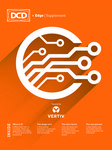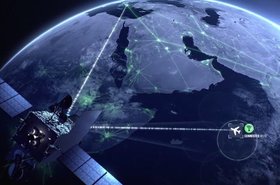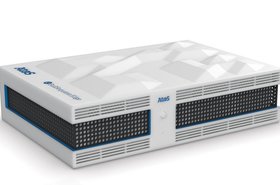The oft quoted Gartner statistic that there’ll be 20 billion devices connected to the Internet by 2020 doesn’t so much highlight the growth of IoT, but rather draws attention to the sheer amount of data that will be generated. The purpose of IoT is to help us make more intelligent decisions based on this data, whether that’s in agriculture, healthcare, IT or critical services. The challenge for organizations then becomes how can they make the most of this data, analyse it and use it to shape decision making — in near real time.
For many, the answer lies in using Edge computing; specifically bringing computing power and storage capabilities closer to where the data is collected. This begs another question: will the growth of IoT and use of Edge computing impact the data center and colocation market? If so, will it make the traditional data center superfluous, or elevate it to new importance?
There isn’t a clear-cut answer. The impact IoT and Edge computing will have on the data center depends on the intersection of a number of technology aspects and purchasing behavior dynamics. These include:
- The uptake of IoT – at the moment the use of IoT is still heavily verticalized and is centered around a few high-potential use cases, such as healthcare, retail and manufacturing.
- The maturity of 5G – while the technology has been launched to the consumer market, the platform to enable this next advancement is faltering over security and coverage concerns.
- The adoption of data analytics – in much the same way as IoT, there is the widely accepted attitude that data analytics represents tremendous potential. However, mirroring the uptake and optimization of IoT, the opportunity around analytics is limited to verticalized applications.
- The viability of regional colocation for the Edge – the feasibility of mobilizing location-specific Edge instances and the ability to spin-up the required compute and Edge communications will be dependent on regional data center locations and mitigating the cost and performance restrictions of public cloud.
- The expansion of customer data lakes – the maturation of customer data lakes curated outside of cloud boundaries with the potential to support Edge applications before wider consolidated publishing in the cloud.
- The location of Edge requirements – the position of the Edge, both in terms of its physical location and architecture, has a high economic weighting in this model and will have a dramatic effect on the outcome.
What’s next for the data center and Edge?
The impact of Edge computing on the data center will depend on the adoption and interplay of the above elements to facilitate the capture, transfer, processing, storage and management of data. As it stands, there is already a lot of interaction between these factors. However, there would need to be a substantial amount of consistent integration between them to establish a valid business case for an Edge instance for IoT. Many of the dynamics discussed above are approaching the apex or just passing the surge in industry hype of the technology industry’s customer base.
Looking specifically at the last element — location — from a business user point of view, the Edge could be anything, from a ship, rig or plane, to a temporary site or event. From a data center or colocation provider perspective, making IoT and Edge instances work may require more than an infrastructure change, but a shift in mindset as well. Traditionally these providers have owned or rented facilities in specific locations to serve business hubs and as such have not moved their facilities closer to the customer instance.
Managed service providers might extend their service remotely, but for the data center provider, it comes down to the economics of location, latency and capacity. In many cases, it is simply hoped that the colocation provider’s infrastructure footprint will do the job. This might indeed be the case for some specific instances, but this is largely geographic luck and hardly forms the basis of a sustainable Edge colocation business model. This will require the mobilization of communications and compute in an effective, responsive and economic instance, which in many cases will be time-bound.
Moving forward
It is fair to say that the proliferation of IoT and use of Edge will have an impact on business overall. But the degree to which these technologies will affect the data center and colocation market specifically depends largely on the interplay between a number of elements that will shape the environment.
From getting to grips with new technologies like 5G, to shifting colocation business models, only time and customer behavior will tell if IoT, and the data lakes created, will drive the rebirth of the data center.
For more on IoT and the Edge, be sure to read our extensive Edge supplement, available for free





